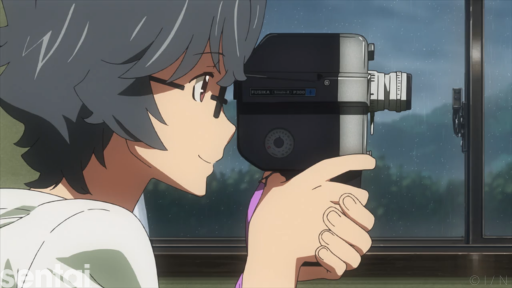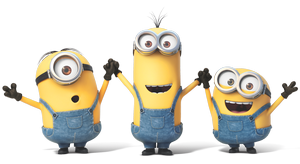Filmmaking, at its core, is the art of weaving a narrative through moving images and sound. It’s a captivating dance between storytelling, technical expertise, and creative vision. But how do filmmakers bring their ideas to life on screen? The answer lies in a vast arsenal of techniques – the invisible toolkit that shapes every scene, evokes emotions and ultimately guides the viewer on a cinematic journey.
This article delves into the essential techniques that filmmakers utilize across various stages of production, from pre-production planning to the final edit. We’ll explore how these techniques work together to create a cohesive and impactful film experience.
Pre-Production: Planting the Seeds of Storytelling
Even before cameras roll, a film’s foundation is laid through meticulous planning. Here, crucial filmmaking techniques come into play:
• Storyboarding: This visual roadmap translates the script into a series of static illustrations, depicting each scene’s composition, camera angles, and character placement. Storyboards ensure everyone involved understands the flow of the narrative and the director’s vision.
• Shot List: A detailed breakdown of every shot needed in the film. It outlines the type of shot (close-up, wide shot, etc.), camera movement, and purpose of each frame. This meticulous list serves as a blueprint for the shooting schedule and ensures efficient filming.
• Mise-en-Scène: This French term encompasses everything that appears in front of the camera – set design, props, costumes, lighting, and actors. Each element is carefully chosen to create a specific mood, atmosphere, and visual language for the film.
Production: Bringing the Script to Life
With a clear plan in place, the magic happens on set. Here, the following techniques become the filmmaker’s tools:
• Cinematography: The art of capturing the story visually through camera angles, lens choices, framing, and movement. Camera angles, like high angles or low angles, can convey power dynamics or vulnerability. Lenses like wide-angle or telephoto lenses can manipulate the perceived size and perspective within a scene.
• Lighting: A crucial element that sets the mood, defines space, and directs the viewer’s attention. Techniques like three-point lighting create a balanced and clear scene. Low-key lighting, with deep shadows, can create a sense of mystery or tension.
• Sound Design: Often an underappreciated element, sound design encompasses everything from dialogue and sound effects to music and ambience. Foley artists meticulously recreate everyday sounds to enhance realism, while a well-composed score can evoke emotions and build tension.
• Performance: The actors bring the script to life, breathing life into the characters. Directing actors is a key technique, where the filmmaker guides performances, eliciting specific emotions and ensuring the characters resonate with the audience.
Post-Production: Weaving the Tapestry
Amazing example of how hybrid traditional film-making, post-production and AI workflows were used together effectively to win @runwayml 's Gen48 film making contest (x2). Great to see he was under time pressure as well like the rest of us – great workflow and process! https://t.co/i3zCTcemgV
— Andy McNamara (@andymac3d) March 6, 2024
Once filming is complete, the raw footage is transformed into a cohesive film through post-production techniques:
• Editing: The heart of post-production, editing involves assembling the footage into a sequence that tells the story most effectively. Filmmakers use cuts, dissolves, and slow-motion to create rhythm, pace, and emotional impact.
• Color Grading: The process of manipulating the color palette of the film to establish mood, genre, and visual style. A vibrant color palette can convey a sense of energy, while a muted palette can create a more somber mood.
• Visual Effects (VFX): The realm of digital manipulation, where anything from creating fantastical creatures to subtly removing imperfections becomes possible. VFX can enhance realism, create impossible scenarios, and add a layer of visual spectacle.
Supersaga: Empowering Animators in the Digital Age
Beginner animators and enthusiasts can now explore the world of 3D animation with user-friendly tools like Supersaga.
Supersaga empowers users to create stunning animations without requiring extensive knowledge of complex 3D software. Its intuitive interface and vast asset library, encompassing customizable characters, scenes, and props, streamline the animation process. Users can further enhance their projects by incorporating sound effects, music, and voice-overs, bringing their creative visions to life.
Supersaga’s commitment to user experience extends beyond its user-friendly design. Their website and blog offer valuable resources and tutorials, while the Alpha playtest version downloadable through their Discord channel provides hands-on experience with the software. This open approach fosters a community of creators and empowers aspiring animators to embark on their journeys of visual storytelling.
Beyond the Basics: Advanced Techniques
The world of filmmaking offers a vast array of advanced techniques that filmmakers can leverage to achieve specific artistic goals:
• Mise-en-Scène Techniques: Techniques like deep focus, where both foreground and background elements are in sharp focus, can be used to convey a sense of depth and complexity within a scene. Dutch angles, where the camera is tilted on its axis, can create unease or instability.
• Editing Techniques: Jump cuts, sharp transitions between non-consecutive shots, can disorient the viewer and create a sense of urgency or fragmented reality. Parallel editing portrays events happening at the same time in different locations, building tension and suspense.
• Sound Design Techniques: Layering sound effects can create a sense of depth and realism. Sound bridges, where sounds from one scene bleed into the next, can create a sense of continuity or foreshadowing.
The Art of Integration: Techniques Working Together
The true power of filmmaking lies in the seamless integration of these techniques. A close-up shot of a tear glistening in an actor’s eye, illuminated by a soft light, accompanied by a melancholic piano melody, creates a potent cocktail of emotions for the viewer. This is where filmmaking transcends technical expertise and becomes an art form.

The Director’s Vision: The Guiding Force
While each technique plays a crucial role, the director acts as the conductor of this cinematic orchestra. The director’s vision shapes the entire filmmaking process, ensuring every element – from the script to the final edit – contributes to a cohesive narrative. Directors utilize these techniques to establish the film’s style, tone, and emotional impact.
The Evolution of Techniques: A Constant Symphony
Filmmaking techniques are not static. New technologies and tools constantly emerge, pushing the boundaries of what’s possible. The rise of digital filmmaking has democratized access to equipment, while advancements in VFX have opened doors to create visually stunning worlds. However, the core principles of using techniques to tell stories and evoke emotions remain constant.
The Power of Technique: Engaging the Audience
By mastering the invisible toolkit of filmmaking techniques, filmmakers can create powerful and engaging experiences for audiences. These techniques transport us to different worlds, make us laugh, cry, and connect with characters on a deeper level. Ultimately, filmmaking techniques are the building blocks that allow stories to come alive on the screen, leaving a lasting impression on viewers long after the credits roll.
Conclusion: A World of Techniques Await
This article provides a glimpse into the vast world of filmmaking techniques. Whether you’re an aspiring filmmaker or simply a curious moviegoer, understanding these techniques enhances your appreciation for the artistry and effort that goes into creating a compelling film. The next time you watch a movie, pay attention to how camera angles, lighting, editing, and sound design work together to weave the narrative tapestry. You’ll discover a whole new layer of meaning and appreciation for the cinematic experience.






